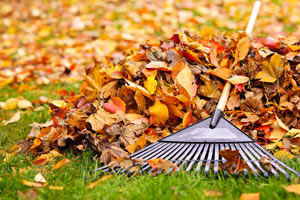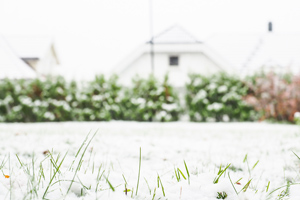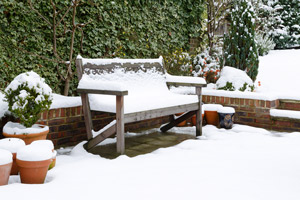Quality matters when hiring for a big project. Call a Best Pick now!
Is your home prepared for the winter season? Most people have a winterization checklist for their houses, but they often forget their yards. Cold temperatures, the weight of the snow, and brisk winds can do considerable damage to your lawn and foliage. Protect your landscape with these seven tips:
 Remove yard debris. Prep the yard by raking dead leaves, which can suffocate the turf. Foliage diseases and garden pests can also thrive underneath the dead leaves. Once you’ve raked the leaves, you can toss them or use them for mulch.
Remove yard debris. Prep the yard by raking dead leaves, which can suffocate the turf. Foliage diseases and garden pests can also thrive underneath the dead leaves. Once you’ve raked the leaves, you can toss them or use them for mulch.- Nurture the lawn. Before the temperature drops, start preparing the lawn for the winter and upcoming spring. To winterize the lawn, spread an even layer of fertilizer on the grass. Next, aerate the lawn to help the roots and prep for seeding. Lastly, sow cool-season grass seed and water the lawn.

Monitor the turf height. It’s important to mow the grass at the right height. Cutting it too short may damage the lawn, and leaving it too tall may allow the grass to bend beneath the snow, creating a damp environment that can lead to plant diseases. For the right balance, cut the grass an inch or so higher than your normal summer cut.- Clean out the dead plants. When the temperature gets colder, annual plants die. They can be discarded or used as compost. It’s important that dead plants be cleared out in order to prevent them from attracting diseases and pests.

Remove delicate plants and ornaments. Bring any tropical plants inside, and keep them away from drafty windows. Protect garden ornaments, such as bird feeders and birdhouses, by taking them down and storing them indoors. Empty the water in birdbaths and fountains, and put a cover over them. Lastly, put statues and patio furniture on cement or cinder blocks so the ice and snow on the ground won’t hurt them.- Protect young flowers, shrubs, and trees. Snow and harsh winds can harm young plants. Wrap them in a breathable fabric such as burlap, or use protective screens made with stakes, wiring, and fabric. This will prevent brittle stems and damaged leaves and flower buds. It will also keep critters from eating your plants. Learn more about burlap screens.
- Prepare for the ice. Lastly, make sure that you have a de-icer on hand for walkways and stairs. If you use salt or sand, make sure you create a protective barrier using burlap, which will keep the residue from washing away and damaging your landscape.
Whether your yard is small or large, following winter landscape tips can prevent broken branches, plant disease, and root damage. And with these helpful lawn care tips, you and your yard will be better prepared for the spring.


























